Tools to cut and strip wire when building a model railroad: When wiring a model railroad, an essential tool is a good pair of wire strippers. I use the two examples of wire strippers shown in fig. 1, and both have served me well over the years. While there are other wire-stripping tools available, these represent the two most common types. Each works a bit differently and both have some additional uses.
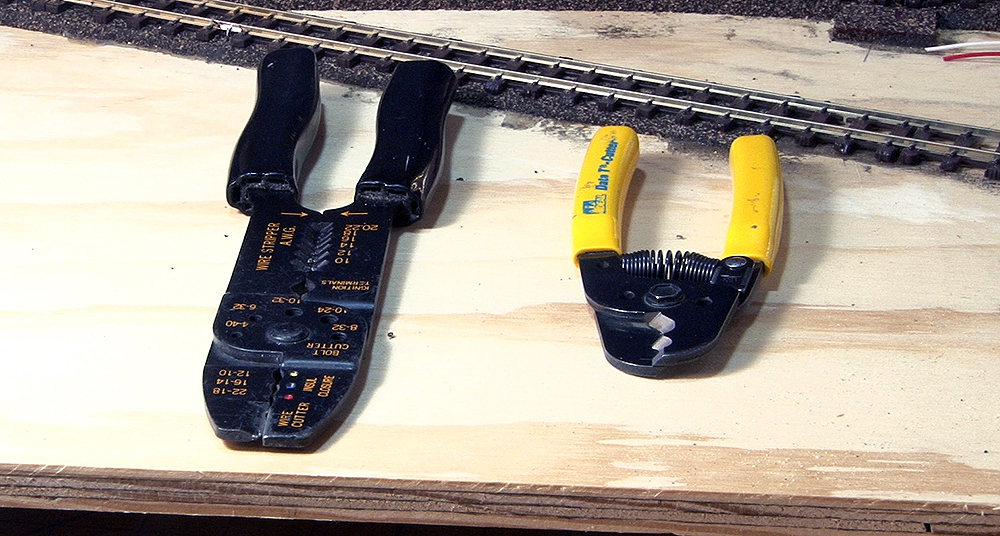
Wire crimper and stripper
The larger of the two is a combination crimper and wire stripper, as shown in fig. 2. At its very tip is the wire cutter. After that there are three color-coded jaws for crimping electrical connectors. The color corresponds to the wire-diameter size accepted by the crimp-on connector and is usually indicated by the plastic insulation sleeve on the end it, or for those without insulation, as indicated on the package.) See how we use a Xuron Universal Wire Stripper in this video.
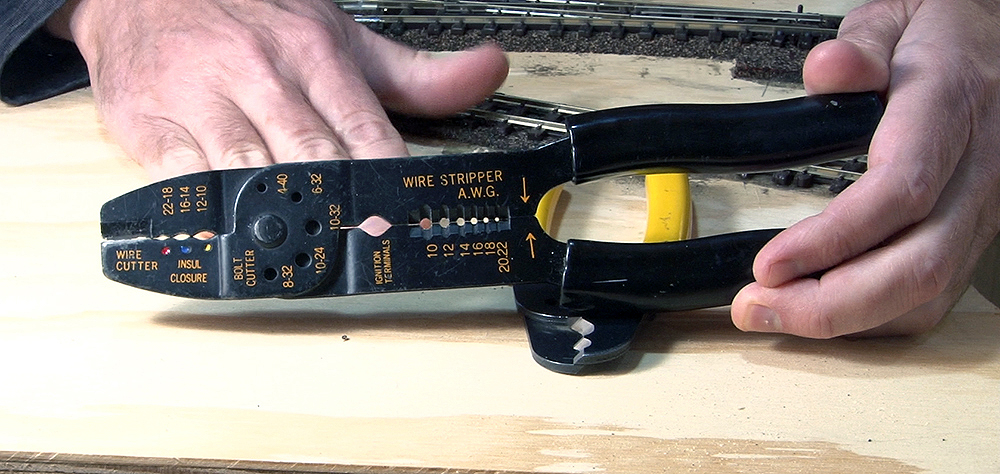
As seen in fig. 3, the connectors themselves come in various shapes and sizes and commonly include exposed metal ends that form lugs, loops, and male or female sockets. You can find crimp connectors in the electrical aisle of most well-stocked hardware stores and home centers, and they provide an easy way to make low-voltage electrical connections without requiring soldering. (Note: Do not use these for household wiring.)
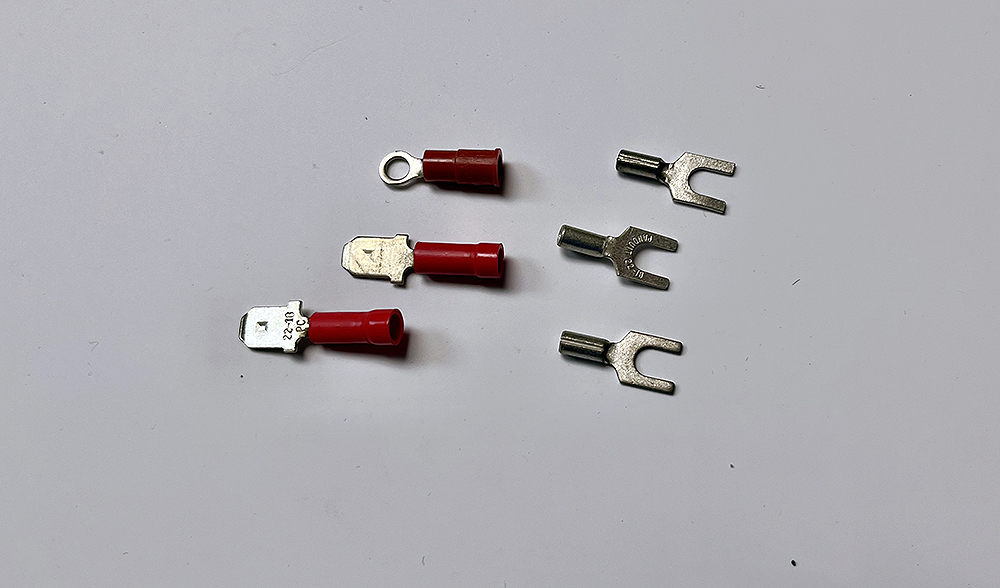
To use one, simply insert the exposed end of the wire into the connector’s sleeve. Next, set the center of the sleeve into the jaw of the crimper matching the corresponding color, then close the jaws tightly. Check to make sure the wire is held firmly by the metal clasp inside the sleeve.
My pair of crimping pliers also include a bolt cutter for small-gauge bolts, and then finally the wire stripper.
A graded wire stripper
The wire stripper on this tool is graded by the wire diameter for the common sizes of 10, 12, 14, 16, 18, 20 and 22 gauge wire. Remember, when using the American Wire Gauge (AWG) scale, the larger the number, the smaller the diameter of the wire.
To strip a piece of wire, select the matching gauge marked on the tool, insert the wire, and close the jaws, as shown in fig. 4. With the jaws closed, pull the wire out of the stripper. As shown in fig. 5, you should be left with clean, exposed wire on the tip and an empty bit of casing.
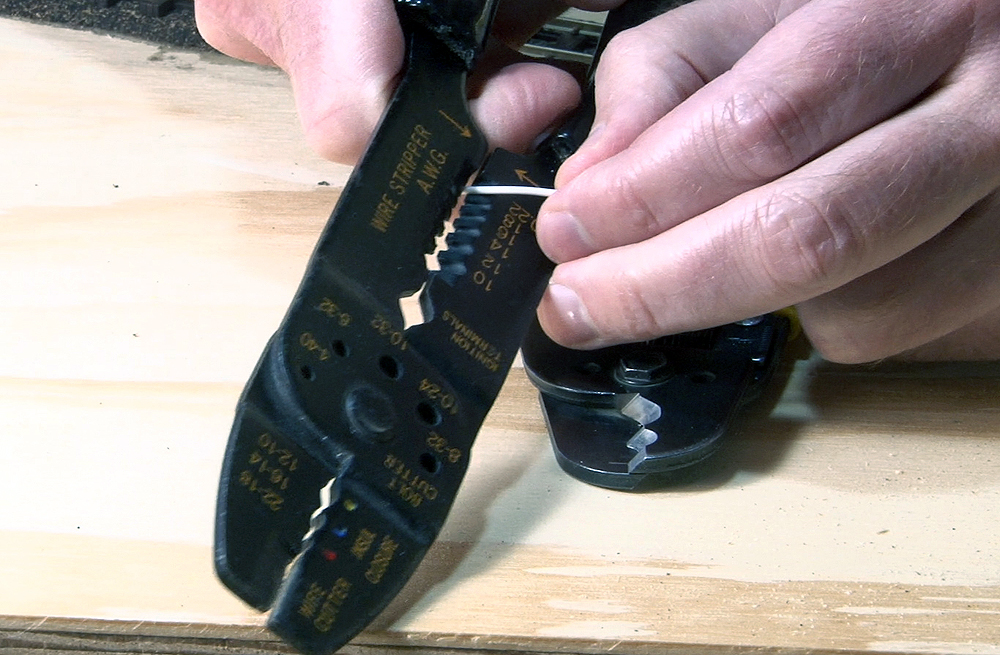
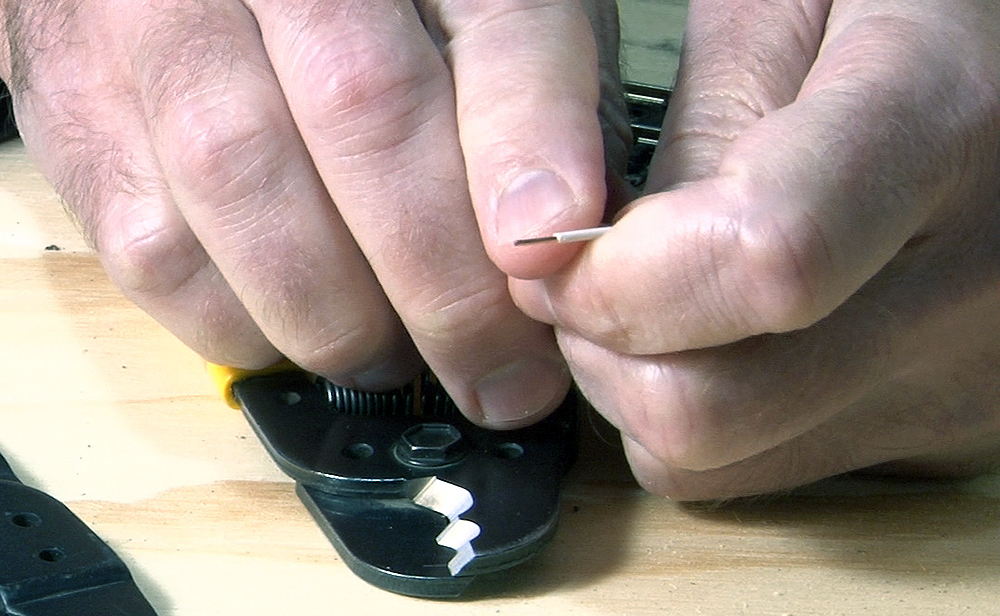
This type of wire stripper is pretty foolproof, and most of the wire I use on O and HO model railroads fall in the 16 to 22 gauge category. However, when making feeder wires for N scale track, I often use 24 gauge wire, and when wiring DCC decoders, I usually use 26 or 28 gauge, all of which are too small for this tool.
Wire cutter and stripper
For smaller wires, I use a combination cutter and stripping tool, as shown in fig. 6. This is more or less a universal wire stripper, and it can be used to cut wire and smaller-diameter cable as well.
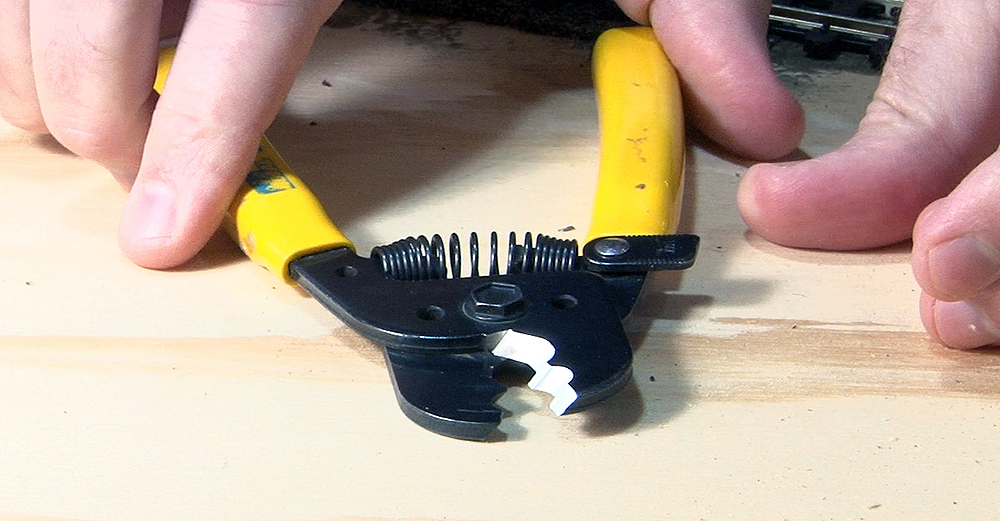
To use it, insert the wire to be stripped into the cutting jaws. Next close the jaws so the blades engage the plastic casing. Finally, pull the wire back and remove the casing. Unlike the first tool, the cutting jaws on this plier don’t have graded blades for wire diameters. Therefore, if you apply too much pressure on the handle, you’ll simply clip the end of the wire off. You have to be more careful when using this tool, and it takes a bit to get used to it.
Stripping cable casing
In addition to stripping single wires, you can use the combination cutter and wire stripper with data cable. Data cable, once called telephone cable, has several individual wires wrapped together inside a plastic outer casing. This type of cable is often used with model railroad signal systems or other layout electronics applications. To access the individual bundled wires, you can use the combination cutter and stripper to remove the outer casing.
First, place the cable into the blades of the stripper at the desired location. Next, carefully close the blades so that they make contact with the casing, then twist the tool back and forth to score the plastic. Finally, pull the cable against the stripper to break the casing where you scored it. It may take a couple of tries. Once the casing has separated, remove the stripper and pull the casing away from the bundle of wires using your hand. The small wires inside a data cable are fragile, and dragging the blades of the stripper along them can damage them or their plastic coating.
One final word on wire cutters and strippers – use them with copper electrical wire only. Cutting other, harder metals, even brass wire, will damage the blades. If that happens, you will need to discard the tool and get a new pair.
So, whether you are working on your layout’s control system, your power bus, your feeder wires, or your signal system, one or more good pairs of wire strippers are essential tools for building a reliable model railroad.













